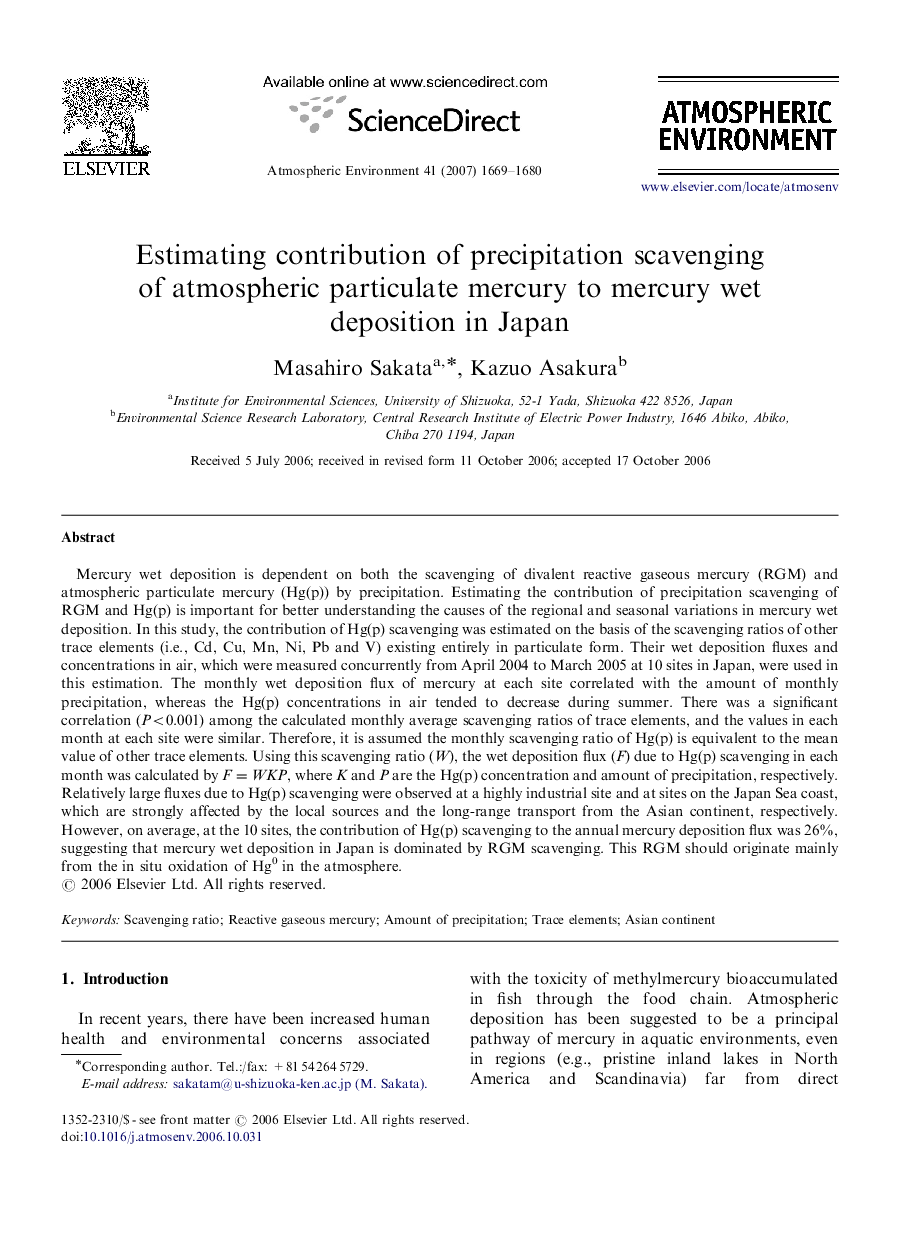| Article ID | Journal | Published Year | Pages | File Type |
|---|---|---|---|---|
| 4444021 | Atmospheric Environment | 2007 | 12 Pages |
Mercury wet deposition is dependent on both the scavenging of divalent reactive gaseous mercury (RGM) and atmospheric particulate mercury (Hg(p)) by precipitation. Estimating the contribution of precipitation scavenging of RGM and Hg(p) is important for better understanding the causes of the regional and seasonal variations in mercury wet deposition. In this study, the contribution of Hg(p) scavenging was estimated on the basis of the scavenging ratios of other trace elements (i.e., Cd, Cu, Mn, Ni, Pb and V) existing entirely in particulate form. Their wet deposition fluxes and concentrations in air, which were measured concurrently from April 2004 to March 2005 at 10 sites in Japan, were used in this estimation. The monthly wet deposition flux of mercury at each site correlated with the amount of monthly precipitation, whereas the Hg(p) concentrations in air tended to decrease during summer. There was a significant correlation (P<0.001) among the calculated monthly average scavenging ratios of trace elements, and the values in each month at each site were similar. Therefore, it is assumed the monthly scavenging ratio of Hg(p) is equivalent to the mean value of other trace elements. Using this scavenging ratio (W), the wet deposition flux (F) due to Hg(p) scavenging in each month was calculated by F=WKP, where K and P are the Hg(p) concentration and amount of precipitation, respectively. Relatively large fluxes due to Hg(p) scavenging were observed at a highly industrial site and at sites on the Japan Sea coast, which are strongly affected by the local sources and the long-range transport from the Asian continent, respectively. However, on average, at the 10 sites, the contribution of Hg(p) scavenging to the annual mercury deposition flux was 26%, suggesting that mercury wet deposition in Japan is dominated by RGM scavenging. This RGM should originate mainly from the in situ oxidation of Hg0 in the atmosphere.
